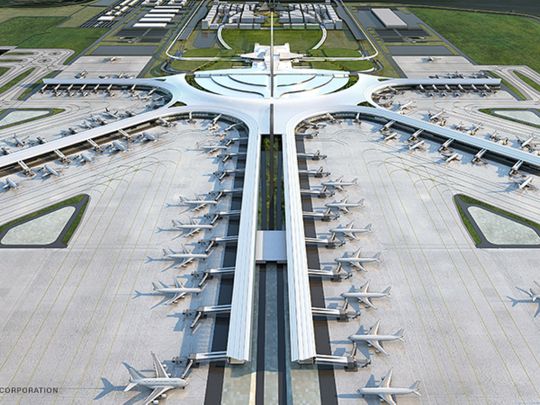
Manila: The skyline of the Philippine capital is changing. So is the view from above. Multi-billion-dollar mega projects are expanding the urban landscape, with massive sea-ward transformation projects in progress – or on the drawing board.
The aim: push back the sea, create new spaces and opportunities. Manila Bay is the centre of this action. Outside the capital, more land reclamation jobs are planned or are in progress.
187
number of on-going and approved reclamation projects across the Philippines.The total area of land reclamation projects in the Philippines, both completed and planned, is significant. As of 2023, there are around 187 ongoing and approved reclamation across the country.
Specifically, Manila Bay has a considerable concentration of these projects, valued at more than 23 trillion pesos ($397 billion), according to one estimate.
$ 397
estimated value of Manila Bay reclamation projectsReclamation, a trend that started here in the early 1960s, has been revived in recent years. It’s helping decongest cities, creating new land for development, mass housing and easing the pressure cramped metropolises.
Here’s the lowdown:
Manila Bay Reclamation
Area: 5,503 hectares (13,598 acres)
The Roxas Boulevard reclamation projects collectively represent a significant expansion of the Manila Bay coastline. This involves 14 approved projects covering 5,503 hectares (55 km2).
Also known as the Manila Bay Reclamation Project, this involves several planned and ongoing reclamation initiatives along the Manila Bay coastline, particularly in the areas adjacent to Roxas Boulevard. Components include the 148-hectare Manila Solar City Project (a mixed-use development), the 419-hectare Horizon Manila, and the 318-hectare Manila Waterfront City.
The total investment for property development is estimated at nearly 23 trillion pesos ($397 billion). The original plan was to reclaim 3,000 hectares (30 km2) of land in Manila Bay.
Besides the SM Mall of Asia Complex, it is known for the 77-hectare (0.77 km2) Cultural Center of the Philippines Complex, the Aseana City Business Park, integrated resorts and complexes such as the City of Dreams Manila, Okada Manila and Solaire Resort, and the Asiaworld compound where the Parañaque Integrated Terminal Exchange (PITX) is situated.
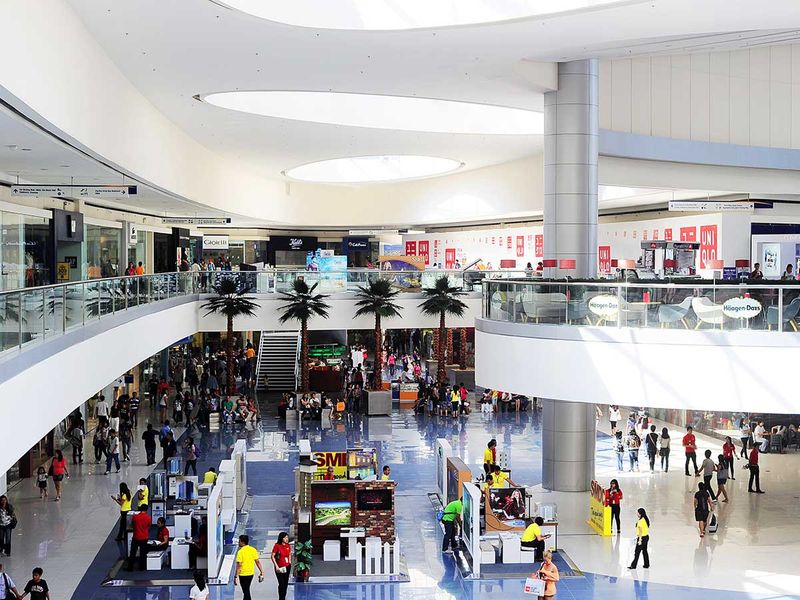
Bulacan Aerotropolis
Area: 1,168 hectares (2,886 acres)
Developed by San Miguel Corp. (SMC), this project includes the construction of the New Manila International Airport, also known as Bulacan International Airport, and surrounding urban infrastructure. The project area spans 2,500 hectares (25 km2) with the airport covering 1,168 hectares and an adjoining airport city, part of the under-construction $15-billion behemoth. It’s a major part of the overall effort to boost the region’s economic growth.
Part of the material used for this reclamation project is the use of up to 6 million tonnes of silt, solid waste and trash dredged from rivers in Manila and nearby provinces.
These include 3 million tonnes extracted from more than 50 kilometers of rivers in the flood-prone Bulacan province spanning the cities and towns of Meycauayan, Obando, Bulakan, Bocaue, Marilao, Balagtas, and Guiguinto. Moreover, 1.2 million tonnes of waste were dredged from 26 kilometers of the Pasig River, 1.1 million tons from 11 kilometers of the Tullahan River, and almost 320,000 tonnes from the San Juan River.
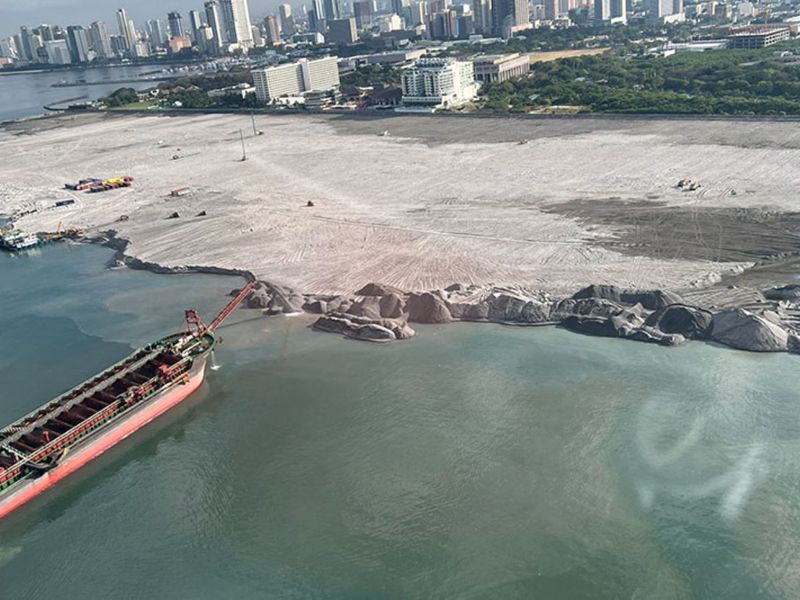
Cebu South Coastal Urban Development Project (CSCUD):
Area: 300 hectares (740 acres)
This includes various projects like the Cebu South Coastal Urban Development Project, which focuses on commercial, residential, and industrial areas to stimulate economic activity in Cebu.

It has an ambitious socialised housing component. The South Road Properties (SRP), also known as the South Reclamation Project, is a 300-hectare (740 acres) reclamation area in Cebu, a trading and cultural hub in central Philippines.
The area, which is reclaimed from Mactan Channel, is located off the coast of the southern district of Cebu City, near Barangays Mambaling, Inayawan, and Pasil.
This is a large-scale initiative aimed at transforming the southern coastal areas of Cebu City into a modern urban hub. Its primary objective: alleviate congestion in the city centre, promote sustainable urban growth, and enhance the overall quality of life for residents.
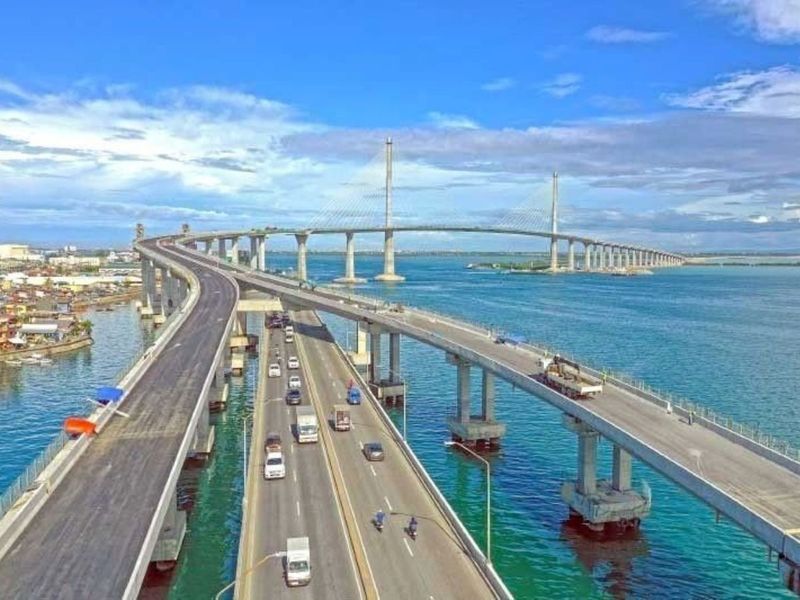
The project will be developed in three phases and aims to provide 40 buildings for socialised housing across a 60-hectare site and other areas along the SRP. Phase 1 alone covers 30 hectares and is expected to benefit approximately 10,000 informal settler families.
The development is part of the larger "National Pabahay Para sa Pilipino Housing" drive to address the housing deficit by constructing 6 million units by the end of President Ferdinand Marcos Jr.'s term in 2028.
The project will also have essential facilities such as schools, markets, and health centers to create a sustainable and integrated community, and aligns with the overall national budget allocated for this extensive housing initiative.

Cebu City North Reclamation Area (NRA)
Area: 169 hectares (417 acres)
The Cebu City North Reclamation Area (NRA), started in 1962 with about 169 hectares, has been further expanded to cover about 330 hectares today. Situated along the northern coastline of the city, it provides easy access to key transportation hubs like the Cebu International Port and the Mactan-Cebu International Airport. Its central location makes it a crucial area for business, commerce, and tourism.
The NRA is a significant economic driver for Cebu City, housing several commercial establishments, shopping malls, and office buildings. Major developments in the area include SM City Cebu, at least 20 hotels, and the Cebu Business Park, which hosts numerous multinational corporations and local businesses.
These establishments contribute significantly to the local economy by providing jobs and attracting investments. Its central location makes it a crucial area for business, commerce, and tourism.
Navotas Coastal Development
Area: 650 hectares (1,606 acres)
This development north of Manila, aims to develop urban, commercial, industrial, housing and green spaces to support the local economy and improve living standards in Navotas. This significant undertaking covers an extensive area along the coastal region of Navotas City. The entire project is designed to cover approximately 650 hectares. A substantial portion of the project involves land reclamation from Manila Bay.
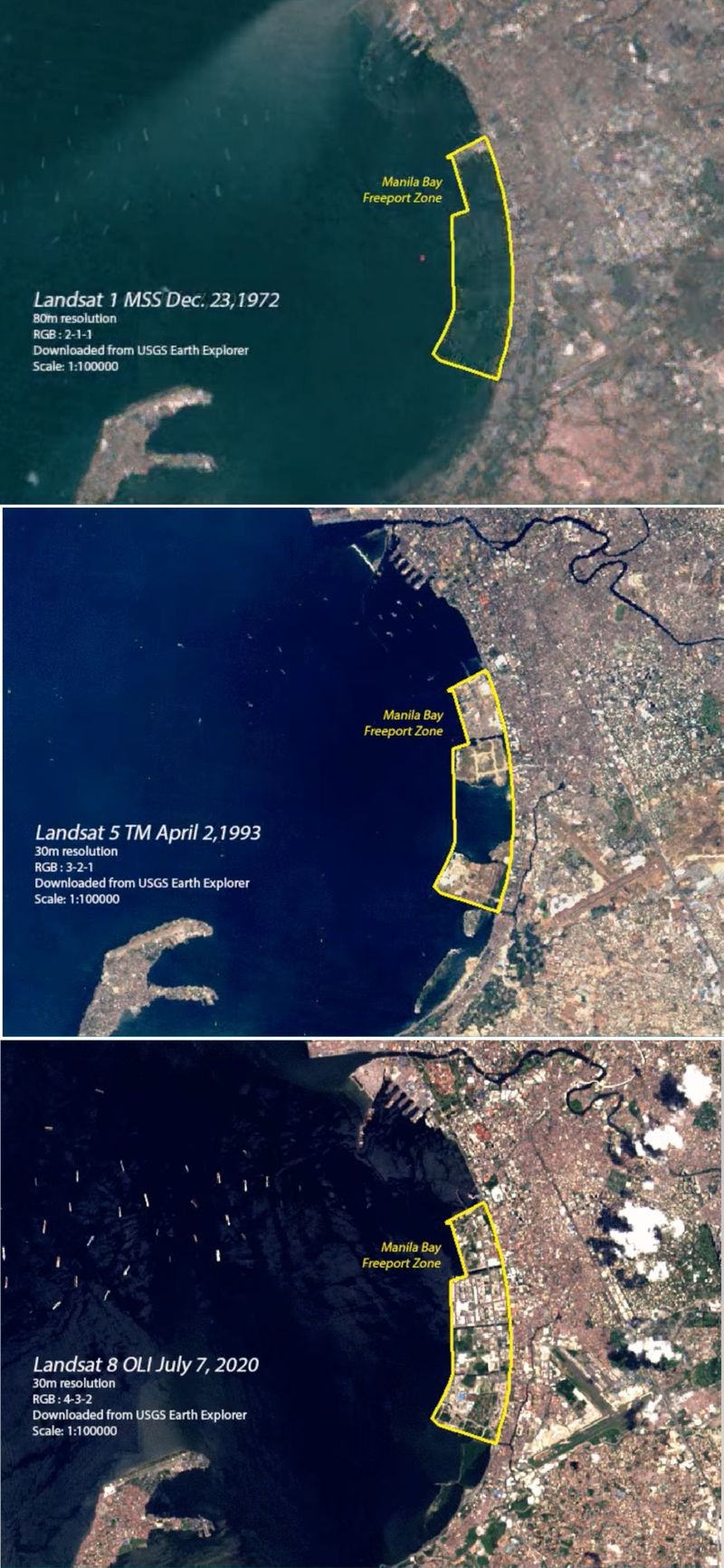
This reclaimed land will be used for new developments and infrastructure. A significant portion of the reclaimed land will be dedicated to housing, aimed at providing affordable and sustainable living spaces for thousands of families.
Large tracts of land will also be used for commercial and industrial activities. The development also includes parks, recreational areas, and waterfront promenades, enhancing the livability and aesthetic appeal of the area.
Pasay Reclamation Project
Area: 265 hectares (654 acres)
This project, covering approximately 265 hectares, is a large-scale development initiative aimed at transforming the coastal area of Pasay City (south of Manila) into a thriving urban hub.
This development aims to enhance economic growth, provide housing and job opportunities, and improve the overall quality of life through the creation of new residential, commercial, and industrial zones, as well as public amenities and green spaces, to be implemented in several phases.
Following the initial land reclamation and establishment of basic infrastructure, including roads, utilities, and seawalls, the residential and commercial zones will be developed, along with public amenities. Further expansion of industrial areas and completion of remaining infrastructure and public spaces.
Las Piñas-Parañaque Coastal Bay Project
Area: 635 hectares (1,569 acres)
The Las Piñas-Parañaque Coastal Bay Project is planned to cover a total area of approximately 635 hectares, reclaiming the shallow coastal area from Asia World Properties to the municipality of Bacoor in Cavite. This reclaimed land will support various types of development – residential, commercial, and industrial zones, along with infrastructure for flood control and coastal defense.
In October 2021, the Philippine Supreme Court en banc voted 11-2 to approve the reclamation project covering approximately 530 hectares of the Manila Bay coastline in Las Piñas and Parañaque, ruling that the alleged environmental threat was not sufficiently established.
In 2009, Alltech Contractors proposed developing 321.26 hectares in Las Piñas and 174.88 hectares in Parañaque along the Manila Bay coastline.
Senator Cynthia Villar (Las Piñas ex-representative), along with local residents, petitioned the Supreme Court to scrub this reclamation, arguing it would increase “flood risk” in their communities. The Philippine Reclamation Authority (PRA) approved the project in 2010, after subjecting to environmental compliance.
The proponents submitted an amended Environmental Performance Report and Management Plan (EPRMP) in December 2010, expanding the project to 203.43 hectares in Parañaque and 431.71 hectares in Las Piñas.
In March 2011, the Department of Environment and Natural Resources–Environmental Management Bureau (DENR-EMB) issued an Environmental Compliance Certificate (ECC) for the project. Villar contended that the project would impede the flow of the Las Piñas-Zapote and Parañaque rivers. In 2013, the Court of Appeals (CA) denied the petition, stating that the project had undergone the proper process, and noted that the submission of an EPRMP is a valid form of Environmental Impact Assessment (EIA).
Panglao Island Reclamation
Area: 450 hectares (1,112 acres)
The Panglao Island Reclamation project, located in Panglao Island, which is part of Bohol province in the Central Visayas region of the Philippines, is situated southwest of Bohol's main island and is known for its beautiful beaches, dive sites, and tourism attractions.
It is planned to cover a total area of approximately 450 hectares. This reclaimed land will be utilised for various purposes, including residential, commercial, tourism, and industrial development. Panglao Island is connected to Tagbilaran City, the capital of Bohol, by two bridges.
The island is famous for its popular tourist destinations. The island is home to Bohol-Panglao International Airport, which boosts connectivity and accessibility, making it an ideal location for further development.
The Davao Reclamation Project
Area: 214 hectares (504 acres)
The Davao Reclamation Project, also known as the Davao Waterfront Development Project, is a major land reclamation initiative in Davao City, located in the southern part of the Philippines.
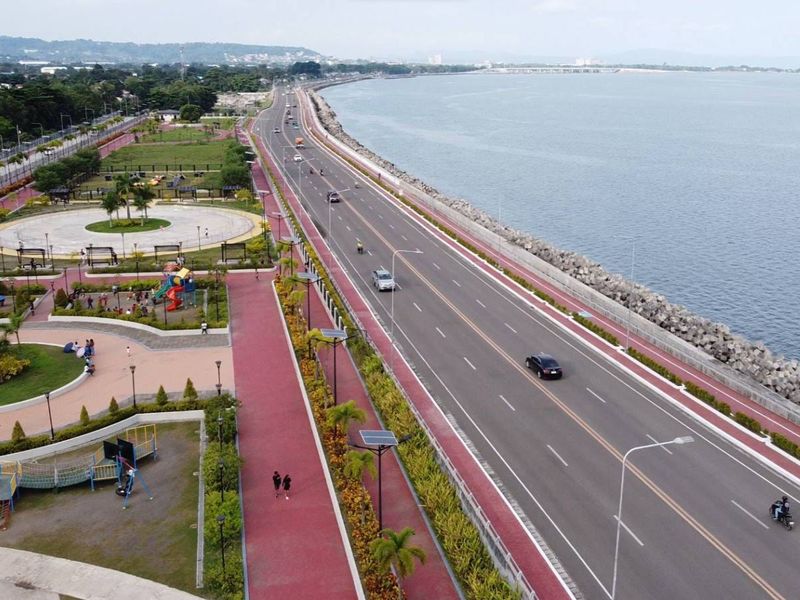
In January 2023, Davao City officials and representatives from the Philippine Reclamation Authority signed a Memorandum of Understanding – in line with the application of the city to reclaim and develop 57 hectares along the reclaimable areas enclosed by the Davao City Coastal Road Project.
This extensive reclamation will be developed to support a variety of uses, including residential, commercial, industrial, and public amenities. An area has been earmarked for affordable housing units and high-end residential complexes, as well as commercial spaces, offices, retail establishments, hotels, entertainment facilities, industrial activities, public amenities and green spaces.
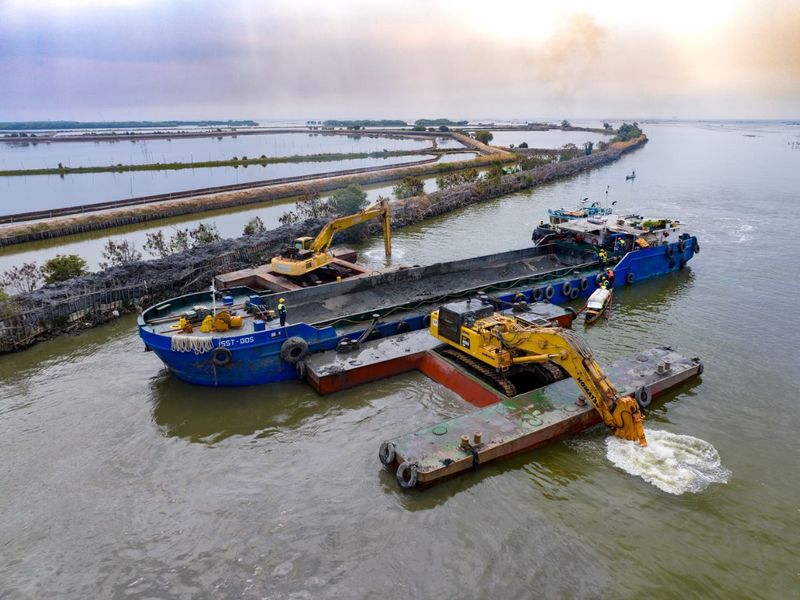
Cebu Reclamation Projects
Area: 765 hectares (1,890 acres)
The Cebu Reclamation Projects are collectively substantial – adding over 765 hectares of new land to support various types of development. These projects aim to enhance Cebu’s economic capacity, provide new residential and commercial spaces, and improve public amenities while addressing environmental sustainability and regulatory compliance.
Includes multiple smaller-scale projects in areas such as Balamban, Carmen, Compostela, Minglanilla and Oslob, focusing on port facilities, commercial spaces, and public amenities. Toledo City (Area: 18 hectares, 44.5 acres) reclamation project will form part of the waterfront area's urban development effort as a new place for a sports stadium, yacht club, commercial and business process outsourcing centers, hospitality, and education facilities.
Balamban reclamation project (Area: 8.4 hectares, 20.75 acres) is the west Cebu province's shipbuilding capital. It plans to construct a dome, a wharf, and an evacuation center in its 84,000-square-meter proposed reclamation area.
Oslob reclamation project (Area: 10 hectares, 27.7 acres) is planned in the whale-watching town of Oslob. It poised to build a commercial hub in its planned 10-hectare reclamation lot. Dumanjug, another town in Cebu, wants to establish income-generating food and commercial facilities in its undetermined size of reclamation area.
Each of the five-hectare reclamation projects in the towns of Carmen and Compostela will be home to their respective public market, transport facilities and structures to protect residents from storm surges.
Dumaguete Smart City
Area: 174 hectares (430 acres)
The Dumaguete Smart City, a 174-hectare, 23-billion-peso township project aims to transform Dumaguete, a city in central Philippines, into a technologically advanced urban center. The project is expected to drive significant economic growth and social benefits for Dumaguete.
By improving infrastructure and public services, the Smart City initiative aims to attract new investments, create job opportunities, and boost the local economy. The integration of smart technologies is also anticipated to enhance the quality of life for residents, providing better healthcare services, improving education systems, and ensuring more efficient public transportation.
Efforts are being made to minimize the environmental footprint through the use of green technologies and sustainable practices.
22
Number of reclamation projects under suspension and review (as of November 2023).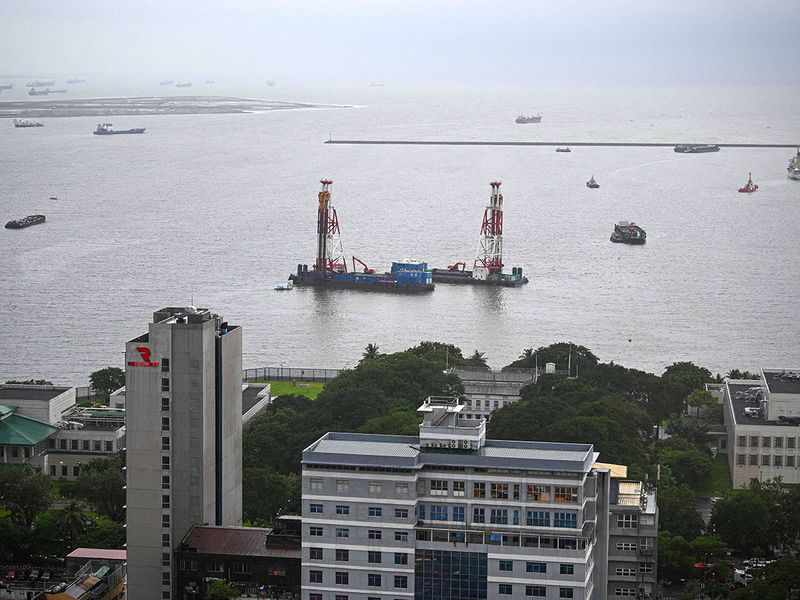
Looking ahead
Reclamation, like bride-building, does offer significant economic and social benefits.
It's not all bed of roses. Besides the engineering challenges, there are environmental concerns raised. Fisherfolk and local communities have expressed their opposition to some of these projects, citing their potential negative environmental impacts. These concerns, and others, must be carefully considered to ensure sustainable practices and comprehensive environmental assessments, in order to mitigate the downsides.
Adherence to national and local regulations, i.e. conducting comprehensive Environmental Impact Assessments (EIA), securing necessary permits and approvals from relevant authorities, including the Philippine Reclamation Authority (PRA) and the Department of Environment and Natural Resources (DENR), and thorough environmental scrutiny underscores the need to balance development with ecological preservation.










